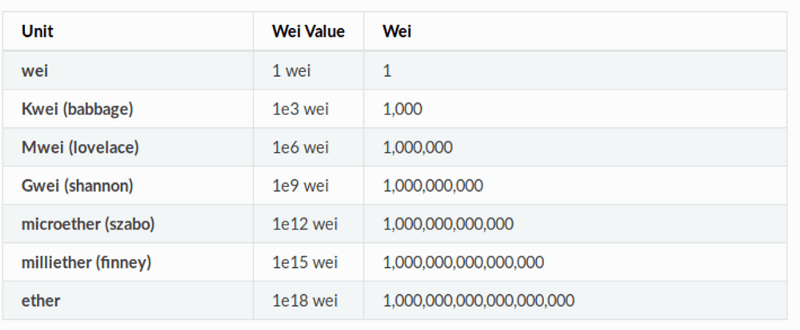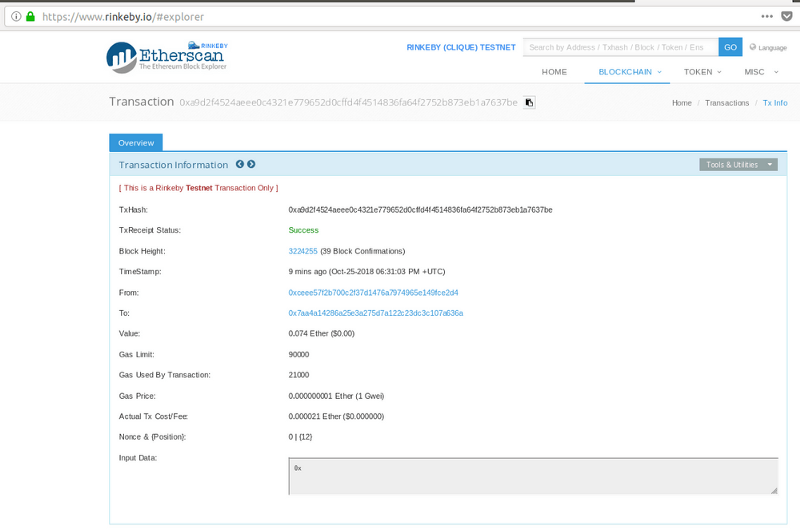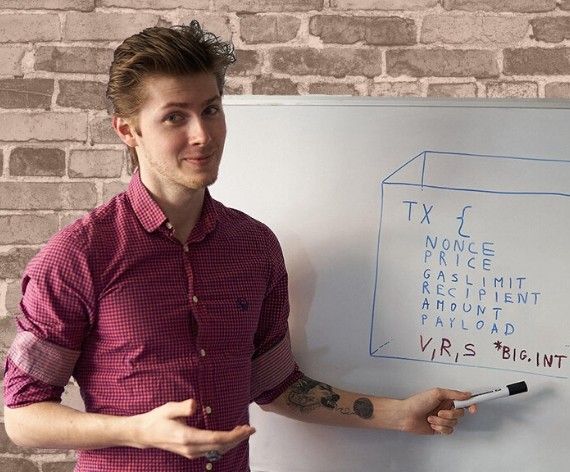In my previous article, you learned how to set up a fully synced blockchain node in 10 mins. It’s now time to learn how to perform a transaction on the Ethereum network using the GETH CLI.
To be on the same page, go through all the steps from previous article first.
Done? Perfect.
At this point you know:
- how to run a fully synced Ethereum blockchain node
- how to attach
GETH console - how to query a balance of an Ethereum account
geth attach ipc:/home/enchanter/.gophersland_ethereum_r1/geth.ipc eth.getBalance("0xceee57f2b700c2f37d1476a7974965e149fce2d4")> 7500000000000000000I do, you might think, but wait for a second Lukas…why is 7.5ETH is displayed as 7500000000000000000 in the Geth console?
Ether vs Wei
The Ethereum Virtual Machine does not support decimals or floats. Apparently, calculations in finance are easier in integers.
Therefore, to be able to send a fraction of 1 ETH, the Ethereum foundation decided to create their own metric system where the smallest unit would be 1 Wei, and 1 Ether is 1e18 Wei.
But no worries, there are tools that can make your life easier. For example, I highly recommend the Ether to Wei online converter:
In order to send $15 worth of Ether, where 1 ETH == $200 (good old times…), you would make a transaction sending 0.0740 ETH which would be, and must be represented in Wei as, 74000000000000000.
Online Ether to Wei converter:

Overview of the Ethereum metric system:

Practice makes mastery. Let’s actually send 74000000000000000 Wei ($15) to another account.
Sending Ether to another account using the GETH CLI
In one terminal, remember to run a fully synced blockchain node:
geth --rinkeby --datadir=~/.gophersland_ethereum_r1 --port=30304 --cache=2048 --rpc --rpcport=8546 --rpcapi=eth,web3,net,personal --syncmode=fastIn another terminal, we will create our second Ethereum account, exactly like in Part 1.
ls -la ~/.gophersland_ethereum_r1/keystore/> drwx------ 2 enchanter enchanter 4096 sep 24 15:36 .> drwx------ 4 enchanter enchanter 4096 sep 24 15:26 ..> -rw------- 1 enchanter enchanter 491 sep 24 15:36 UTC--2018-09-24T13-36-43.069452577Z--ceee57f2b700c2f37d1476a7974965e149fce2d4geth --datadir=~/.gophersland_ethereum_r1 account new> INFO [09-24|15:36:33.566] Maximum peer count ETH=25 LES=0 total=25> Your new account is locked with a password. Please give a password. Do not forget this password.> Passphrase: > Repeat passphrase: > Address: {7aa4a14286a25e3a275d7a122c23dc3c107a636a}ls -la ~/.gophersland_ethereum_r1/keystore/> drwx------ 2 enchanter enchanter 4096 oct 25 20:14 .> drwx------ 4 enchanter enchanter 4096 oct 25 19:48 ..> -rw------- 1 enchanter enchanter 491 sep 24 15:36 UTC--2018-09-24T13-36-43.069452577Z--ceee57f2b700c2f37d1476a7974965e149fce2d4Now, let’s attach the Geth Console to the currently running blockchain node as we did in the previous article in order to transfer $15 to this newly created account by executing the eth.sendTransaction command.
geth attach ipc:/home/enchanter/.gophersland_ethereum_r1/geth.ipc eth.sendTransaction({from: "0xceee57f2b700c2f37d1476a7974965e149fce2d4",to: "0x7aa4a14286a25e3a275d7a122c23dc3c107a636a", value: "74000000000000000"})Error: authentication needed: password or unlock.
You should get an error. This is because sending Ether is a “transaction,” and a transaction changes state, costs gas, and spends funds. Which means it needs to be signed with our Private Key that is stored in the Keystore. In order to decrypt the key, we must provide a password, or in other words, unlock the account.
Execute the following command to unlock your account for the next 60s, and execute the sendTransaction command once again.
web3.personal.unlockAccount(web3.personal.listAccounts[0], null, 60) eth.sendTransaction({from: "0xceee57f2b700c2f37d1476a7974965e149fce2d4", to: "0x7aa4a14286a25e3a275d7a122c23dc3c107a636a", value: "74000000000000000"})We could have also passed the password as a second argument instead of null. But this way is safer as your password is only in a buffer and not stored in any log or visible on the screen.

This time the command succeeded, and a Transaction hash receipt was returned! Oh yeah!
As we are connected to the Rinkeby network, we can take advantage of the Rinkeby GUI explorer to check the status of this transaction, gas spent, gas price, etc.
- Open the explorer
- Paste the Transaction receipt hash to the search bar
- Done, we spent 21,000 of Gas (standard for sending funds) and the Transaction succeeded!

You can now query the balances of both accounts and see the changed state:
eth.getBalance("0xceee57f2b700c2f37d1476a7974965e149fce2d4") > 7425979000000000000 eth.getBalance("0x7aa4a14286a25e3a275d7a122c23dc3c107a636a") > 74000000000000000Works like a charm.
Congratulations! You:
- learned the difference between Ether and Wei and how to convert them
- submitted your first transaction across global Ethereum test network, Rinkeby
You can continue expanding your blockchain skills by building one from scratch in Go!"

